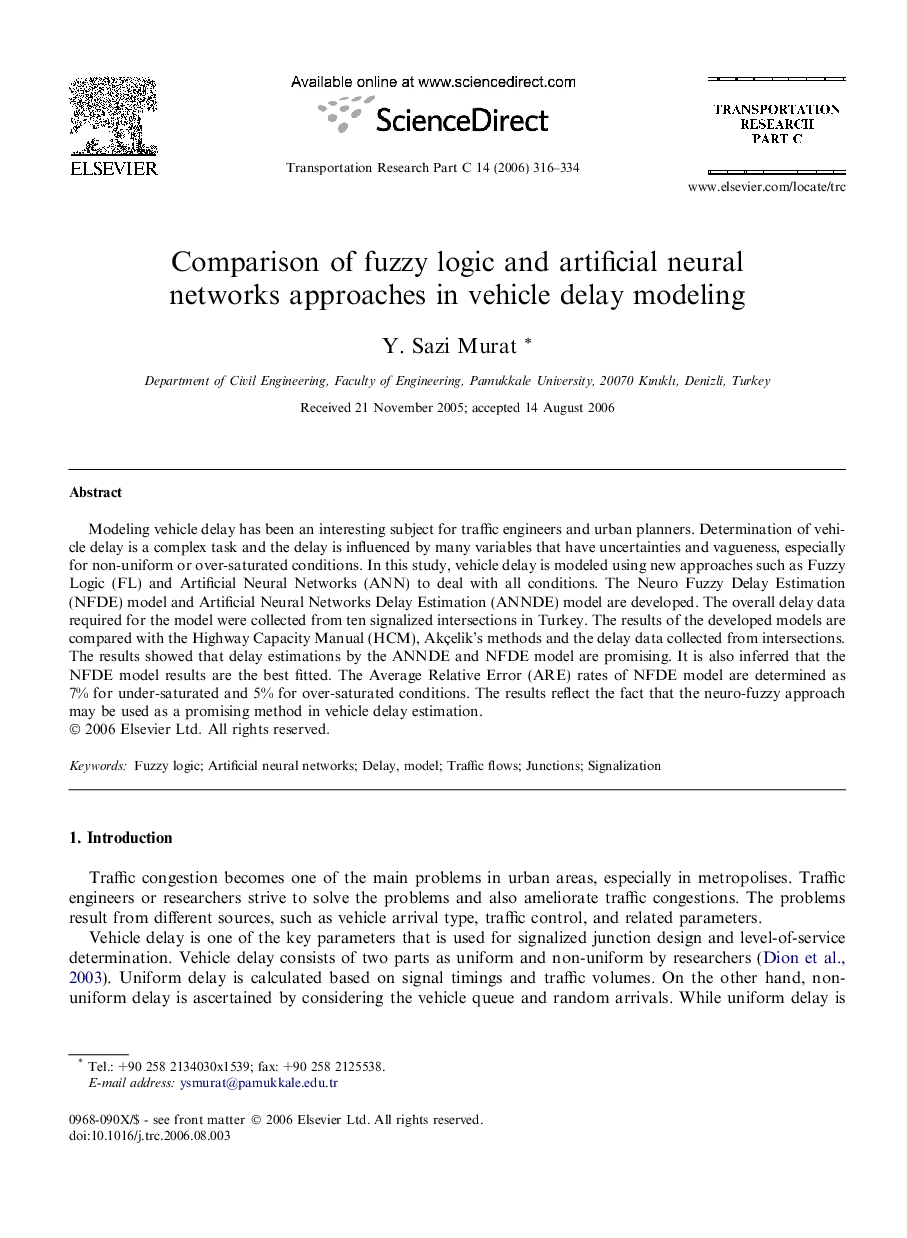| Article ID | Journal | Published Year | Pages | File Type |
|---|---|---|---|---|
| 525521 | Transportation Research Part C: Emerging Technologies | 2006 | 19 Pages |
Modeling vehicle delay has been an interesting subject for traffic engineers and urban planners. Determination of vehicle delay is a complex task and the delay is influenced by many variables that have uncertainties and vagueness, especially for non-uniform or over-saturated conditions. In this study, vehicle delay is modeled using new approaches such as Fuzzy Logic (FL) and Artificial Neural Networks (ANN) to deal with all conditions. The Neuro Fuzzy Delay Estimation (NFDE) model and Artificial Neural Networks Delay Estimation (ANNDE) model are developed. The overall delay data required for the model were collected from ten signalized intersections in Turkey. The results of the developed models are compared with the Highway Capacity Manual (HCM), Akçelik’s methods and the delay data collected from intersections. The results showed that delay estimations by the ANNDE and NFDE model are promising. It is also inferred that the NFDE model results are the best fitted. The Average Relative Error (ARE) rates of NFDE model are determined as 7% for under-saturated and 5% for over-saturated conditions. The results reflect the fact that the neuro-fuzzy approach may be used as a promising method in vehicle delay estimation.
